Ski: 2025-2026 ZAG Mata, 178 cm
Test Locations: Taos Ski Valley, NM; Crested Butte Mountain Resort, CO
Days Skied: ~10
Available Lengths: 163, 168, 173, 178 cm
Blister’s Measured Tip-to-Tail Length (straight-tape pull): 177.1 cm
Stated Weight per Ski: 1950 grams
Blister’s Measured Weight per Ski: 1980 & 1981 grams
Stated Dimensions: 142-90-119 mm
Blister’s Measured Dimensions: 141.5-90-118 mm
Stated Sidecut Radius (178 cm): 14.5 meters
Measured Tip & Tail Splay (ski decambered): 43.5 mm / 19.5 mm
Measured Traditional Camber Underfoot: 9.5 mm
Core Materials: poplar + titanal (partial layer) + rubber inserts + quadraxial fiberglass laminate
Base: sintered
Factory Recommended Mount Point: -9.4 cm from center; 79.2 cm from tail
Boots Used: Lange Shadow 130 MV, Armada AR One 130
Bindings Used: Look NX 12 Konect
[Note: Our review was conducted on the 24/25 Mata, which returns unchanged for 25/26]

Intro
Over the past several years, we’ve seen a small but noteworthy trend in the ski world: brands are creating skis optimized for carving, especially tight turns, but these skis don’t look (or perform) like traditional piste skis.
Taking inspiration from snowboarding’s “free-carving” and “volume-shifted” designs, these new skis promise exhilarating, Slalom-ski-like performance on piste, but often in much more accessible and even all-mountain-friendly packages.
The term “fun carver” has been used to describe these sorts of unconventional turn-focused skis, and ZAG recently added their own offering to the nebulous class.
The ZAG Mata is a 90mm-wide ski that, like others in this class, immediately stands out when you see it. The Mata’s asymmetrical shape and tight sidecut radius make it clear that it’s neither a traditional carver nor a traditional all-mountain ski.
We were excited to try the Mata, see how niche or versatile it proved to be, and compare it to a wide range of potentially comparable options in today’s market. Before we got our first laps on it, we sat down with ZAG at Blister Summit 2024 to get the whole backstory on the Mata and the rest of their 24/25 lineup:
What ZAG says about the Mata:
“The all-mountain ski that you’ve never seen before! This marks the arrival of a new ski and a new state of mind within the ZAG family. This ski was designed with an explosive asymmetric shape and impressive skiability. 90mm underfoot to give it versatility coupled with a titanal plate to let you control the power when you want it. Aggressive but not exclusive, carving has never been as enjoyable than with the new MATA Ti.”
— ZAG
Construction
The Mata uses a variation of ZAG’s “heavy duty” construction, which includes a full poplar wood core, quadraxial fiberglass laminate, rubber damping inserts, semi-cap ABS sidewalls, recycled edges, sintered base, 33% bio-sourced resin, and a 50% bio-sourced nylon top sheet. However, the Mata also adds two titanal strips fore and aft of the bindings, reportedly for adding edge grip and rebound.
As a part of their “ZAGREEN” program, ZAG lists where all of their materials are sourced; 95% of them come from Europe, and the skis are manufactured at the Nobile factory in Poland.
Shape & Rocker Profile
The Mata’s asymmetrical tips and tails are certainly eye-catching, but the effective edge of the ski is still symmetrical (i.e., the tip and tail shapes are just for aesthetics, rather than performance). The Mata has very wide shovels that contribute to its tight sidecut radius, and its tails are substantially narrower (20+ mm) than the shovels.
The Mata’s rocker profile is more traditional. The ski is mostly cambered, but it features a bit of rocker and the tips and tails. Its rocker lines are a bit deeper than most piste-specific skis, but not as deep as some ~90mm-wide all-mountain skis.
Flex Pattern
Here’s how we’d characterize the flex pattern of the Mata Ti:
Tips: 8
Shovels: 8-8.5
In Front of Toe Piece: 9-9.5
Underfoot: 9.5
Behind the Heel Piece: 9-8
Tails: 8
None of the individual sections of the ski feels particularly soft — in fact, its tips and tails feel pretty stiff compared to the tips and tails of many other all-mountain skis. However, as a whole, the Mata is pretty easy to flex (more on that in the Full Review below).
Sidecut Radius
As we noted up top, the Mata has a tight sidecut radius. For the 178 cm length we’ve been testing, ZAG’s stated radius for the Mata is 14.5 meters. That’s pretty short compared to many all-mountain skis, though it’s not quite as short as some other ‘fun carvers,’ such as the Black Crows Mirus Cor (13 m) and Line Blade (also about 13 m).
Mount Point
The Mata’s recommended mount point is about -9.5 cm from true center, which is decidedly directional / pretty set-back.
Weight (and Comparisons)
Our 178 cm Mata weighs about 1980 grams per ski. That falls a bit on the heavier end of the spectrum for modern all-mountain and piste-oriented skis around the same width, but it’s not a major outlier in this regard.
For reference, below are some of our measured weights (per ski in grams) for some notable skis. As always, keep in mind the length and width differences to try to keep things more apples-to-apples.
1664 & 1671 Kore 87 Ti W, 170 cm
1675 & 1732 Folsom Spar 78, 177 cm
1687 & 1693 Faction Dancer 79, 178 cm
1701 & 1706 Rossignol Forza 70D V-Ti, 173 cm
1724 & 1735 Parlor Warbird, 178 cm
1724 & 1749 Black Crows Octo, 179.3 cm
1728 & 1750 Renoun Atlas 80, 177 cm
1735 & 1754 K2 Mindbender 90C, 178 cm
1783 & 1801 Head Kore 88 Ti, 177 cm
1796 & 1838 Black Crows Mirus Cor, 178 cm
1808 & 1834 Northland AM178, 178 cm
1820 & 1867 Kästle Paragon 93, 177 cm
1821 & 1827 Majesty HNX Ti, 178 cm
1823 & 1853 Atomic Maverick 88 Ti, 184 cm
1832 & 1841 K2 Disruption 78Ti, 177 cm
1833 & 1849 Shaggy’s Brockway 90, 180 cm
1837 & 1854 Fischer The Curv GT 85 Redefine, 175 cm
1854 & 1863 Salomon Stance 90, 182 cm
1874 & 1877 Head Kore 94 Ti, 177 cm
1900 & 1908 Atomic Maverick 95 Ti, 180 cm
1906 & 1907 Dynastar M-Cross 88, 184 cm
1911 & 1917 K2 Disruption 82Ti, 177 cm
1915 & 1937 K2 Mindbender 89Ti, 182 cm
1940 & 1949 Kästle MX84, 176 cm
1941 & 1968 Volkl Peregrine 80, 177 cm
1960 & 2004 Kästle MX88, 181 cm
1980 & 1981 ZAG Mata, 178 cm
1999 & 2060 Line Blade, 181 cm
2000 & 2016 Volkl Peregrine 82, 177 cm
2003 & 2011 Head Supershape e-Magnum, 170 cm (w/ binding plates)
2008 & 2015 Folsom Spar 88, 182 cm
2025 & 2028 Meier Quickdraw, 181 cm
2045 & 2057 Rossignol Arcade 88, 178 cm
2047 & 2056 Blizzard Anomaly 88, 182 cm
2047 & 2082 4FRNT MSP 91, 181 cm
2058 & 2079 Stöckli Montero AR, 180 cm
2063 & 2094 Moment Commander 92, 182 cm
2072 & 2094 Wagner Summit 91, 182 cm
2096 & 2154 Nordica Steadfast 85 DC, 179 cm
2112 & 2116 Folsom Spar Turbo, 182 cm
2121 & 2147 Head Supershape e-Titan, 177 cm (w/ binding plates)
2148 & 2165 Atomic X9S Retro ARC 735 RS, 175 cm (w/ binding plates)
2199 & 2211 Head Supershape e-Rally, 177 cm (w/ binding plates)
2235 & 2236 Elan Wingman 86 CTi, 184 cm (w/ binding plates)
2225 & 2248 K2 Disruption MTi, 175 cm (w/ binding plates)
2271 & 2273 Fischer The Curv GT 85, 175 cm (w/ binding plates)
2335 & 2342 Fischer RC4 Noize, 178 cm (w/ binding plates)
2432 & 2445 Fischer RC4 The Curv, 185 cm (w/ binding plates)
For the 2024-2025 season, we’ve partnered with Carv to use their Carv 2 sensors and digital ski coach app to not only learn more about our own skiing technique, but also add more useful info to our ski reviews. Here, you’ll see us reference some of the data that the Carv 2 sensors record and analyze while we’re skiing. Check out our announcement to learn more about how Carv works, why we’re excited to use it as a tool for our reviews, and how to get a discount on your own Carv setup.
FULL REVIEW
We first got acquainted with the Mata at Blister Summit 2024, where ZAG had it on offer to demo for all attendees. Afterward, we started our long-term test, including a spring review trip to Taos Ski Valley and lots of days at Crested Butte Mountain Resort throughout the 24/25 season.
On-Piste — Turn Initiation & Turn Shapes
Luke Koppa (5’8”, 155 lbs / 173 cm, 70 kg): As you’d expect, given its fat shovels and tight sidecut radius, the Mata generally feels eager to get on edge. However, it’s a lot calmer and more casual in this regard than, say, an actual Slalom ski — or even a ‘recreational’ but more traditional piste ski.
Once I get going past roughly 10-15 mph (16-24 kph), all it takes is a bit of pressure on the front of my boots to get the Mata on edge and cutting across the fall line. But the Mata’s shovels don’t feel as precise and locked-in as a more traditional carver with a similar sidecut radius (e.g., Fischer The Curv GT 85, Head Supershape e-Rally).
The upside to this is that the Mata feels surprisingly composed and predictable when you don’t feel like making really tight, aggressive carves. Many skis with similar sidecut radii can feel hooky or unsettled if you try to make bigger turns, but the Mata is actually pretty versatile in terms of turn shapes. With moderate pressure on the front of the ski, it’s fairly comfortable making what I’d call ‘medium’ to ‘medium-large’ turns.
However, if you push it hard, the Mata definitely likes tighter turns. Looking at my Carv data, I tended to average turn shapes between roughly 11-13 meters on the 178 cm Mata when I was really driving it. I’m not sure I could make it through an actual Slalom course on the 178 cm Mata, but I think that’d be more due to a lack of talent than the ski. The Mata’s shovels don’t feel very stiff on snow, and combined with its pretty tight sidecut radius, that makes it easy to bend into pretty tight arcs.
On-Piste — Edge Hold, Energy, & Suspension
So, the Mata is easy to get on edge, but what does it feel like once you get it there?
Compared to narrower, more traditional carvers, the Mata generally doesn’t feel quite as precise. With fresh edges, it can still cut turns into very firm snow, but its tips and tails don’t feel ultra-precise. This makes the Mata a pretty forgiving carver, allowing you to ease into and out of carved turns in a predictable manner. But it also means this ski doesn’t send you flying across the fall line at the start of a turn or launch you out at the end with the same power as some skis with similar sidecut radii but more traditional shapes, rocker profiles, constructions, etc.
For most of the groomer conditions we get in the Rocky Mountains, the Mata’s edge hold has been totally adequate, and I’ve had a blast carving it. But if you’re looking for a ski that will spend a lot of time on ice or really firm, smooth snow, you might be better off on a narrower, more traditional carving ski.
On the other end of the spectrum, the Mata handles more variable piste conditions really well. I recently got back on it during a major warm-up event in Crested Butte, and the Mata felt pretty ideal. The groomers were generally quite soft, but there were tons of piles of pushed-around snow, ruts, and mounds. These conditions can be tricky, especially on narrower and/or stiffer skis, which can get hung up in softer snow and/or knocked around in the crud.
The Mata, on the other hand, generally feels pretty predictable in these less consistent piste conditions. I think it offers very nice suspension for its moderate weight, and the fact that its shovels and tails aren’t ultra-precise becomes a benefit when dealing with grabbier snow and inconsistent snow surfaces. The Mata isn’t great at making Super-G turns through these conditions, but it’s really fun to carve hard, tight turns through the clean sections, then feather, slash, or hop around the more variable snow. Between the Mata’s tight sidecut radius and easily releasable tails, all those clumps of snow become features to play around, rather than annoying obstacles.
The Mata is also a pretty lively ski. In the soft conditions the other day, I was able to achieve 100% “Transition Weight Release” on almost every turn aboard the Mata (that’s Carv’s metric for how much you unweight your skis during each turn transition; 100% typically means you got your skis all the way off the snow).
On firmer snow, I didn’t find myself getting fully airborne as often on the Mata, which I’d mostly attribute to its looser-feeling tail. Some carvers, particularly those with stiff tails that don’t feature much tapering or rocker, feel like they hang onto each carve until the very end. When pushed hard, the Mata’s tails tend to wash out just a bit at the end, leading to a less powerful and explosive experience. In the grand scheme, though, I’d still call this a very energetic and exciting carver that also deals with variable snow in a predictable fashion.
Off Piste Performance
The biggest surprise during my time with this ski was how much I ended up enjoying it off piste. Personally, I wouldn’t pick it as a daily driver for a place like Crested Butte, which has tons of very tight and technical off-piste terrain, but it’s by no means a piste-specific ski.
In moderately spaced bumps, the Mata’s shovels don’t feel particularly hooky, and its tails are easy to release as long as you keep some pressure on the front of the ski. Its swing weight does feel a bit heavy, relative to skis of similar weights but with less radical shapes, but I’d still call the Mata much more agile than sluggish.
In very tight moguls, the Mata’s big shovels can feel a bit cumbersome, but it’s still pretty easy to pilot if you keep your head up and are thinking a few turns in advance. And in more widely spaced bumps, it’s fun to utilize the Mata’s tight sidecut radius to make a mix of carves, hops, and slashes. When we were in Taos, the double-fall-line Reforma run was covered in really nicely spaced bumps, and I had a blast gapping and carving down it on the Mata.
If, overall, off-piste performance is a bigger priority for you than how well a ski carves, then I’d still push you toward a more traditional all-mountain ski (e.g., ZAG’s Harfang line, or their more playful Slap series). But, especially in soft-ish snow and more moderately spaced bumps / trees, I’ll happily take the Mata off piste (and then still have a blast on all the groomers).
Who’s It For?
The answer to this is a bit tricky, not because the Mata is some niche ski that only certain skiers will enjoy, but because it’s an unconventional one.
Overall, the Mata makes the most sense for folks who want to carve tight turns on piste, especially if they also want to be able to enjoy taking the same ski off piste when conditions are decent.
If you want a tight-turning ski that offers exceptional edge hold and power on icy slopes, I’d point you toward a narrower, more traditionally shaped carving ski (see the “Frontside” section of our Winter Buyer’s Guide). And if you’re mostly looking for a ski that’s maneuverable and/or very stable in off-piste conditions / terrain, I’d probably recommend a wider, more traditional all-mountain ski.
But the Mata blends those two categories into a really fun and surprisingly adaptable ski. It’s engaging and exciting on groomed slopes, even moderate-angle ones, but it’s a lot more forgiving and maneuverable off-piste than the vast majority of narrower, more conventional carvers that feel similarly engaging on piste.
Bottom Line
The ZAG Mata encourages tight, high-edge-angle carves on piste, whether the slopes are firm and smooth or soft and variable. But you can utilize its lively and agile nature off piste, too. In the growing (but still relatively ambiguous) class of ‘fun carvers,’ the Mata isn’t the absolute quickest-turning option, but it is one of the most versatile.
Our Deep Dives, Winter Buyer’s Guide, & Flash Reviews
BLISTER+ members and those who purchase our Digital Access Pass can check out the Deep Dive comparisons linked below, where we compare a given ski, bike, etc. to a whole bunch of other comparable products in its class. Don’t have access? Get our Digital Access Pass to read all of our Deep Dive comparisons, as well as our Flash Reviews, where we provide our initial impressions as soon as we start testing gear.
Or, even better, become a BLISTER+ member to get that + the best worldwide Outdoor Injury Insurance, exclusive deals and discounts on skis, personalized gear recommendations from us, access to our annual Winter Buyer’s Guide, and much more.
On that note, you can also get our thoughts on this ski and 300+ others in our 2024-2025 Blister Winter Buyer’s Guide. BLISTER+ members already have access, or you can purchase the guide on its own to get the the print copy + digital version at no extra cost, or the digital-only edition.
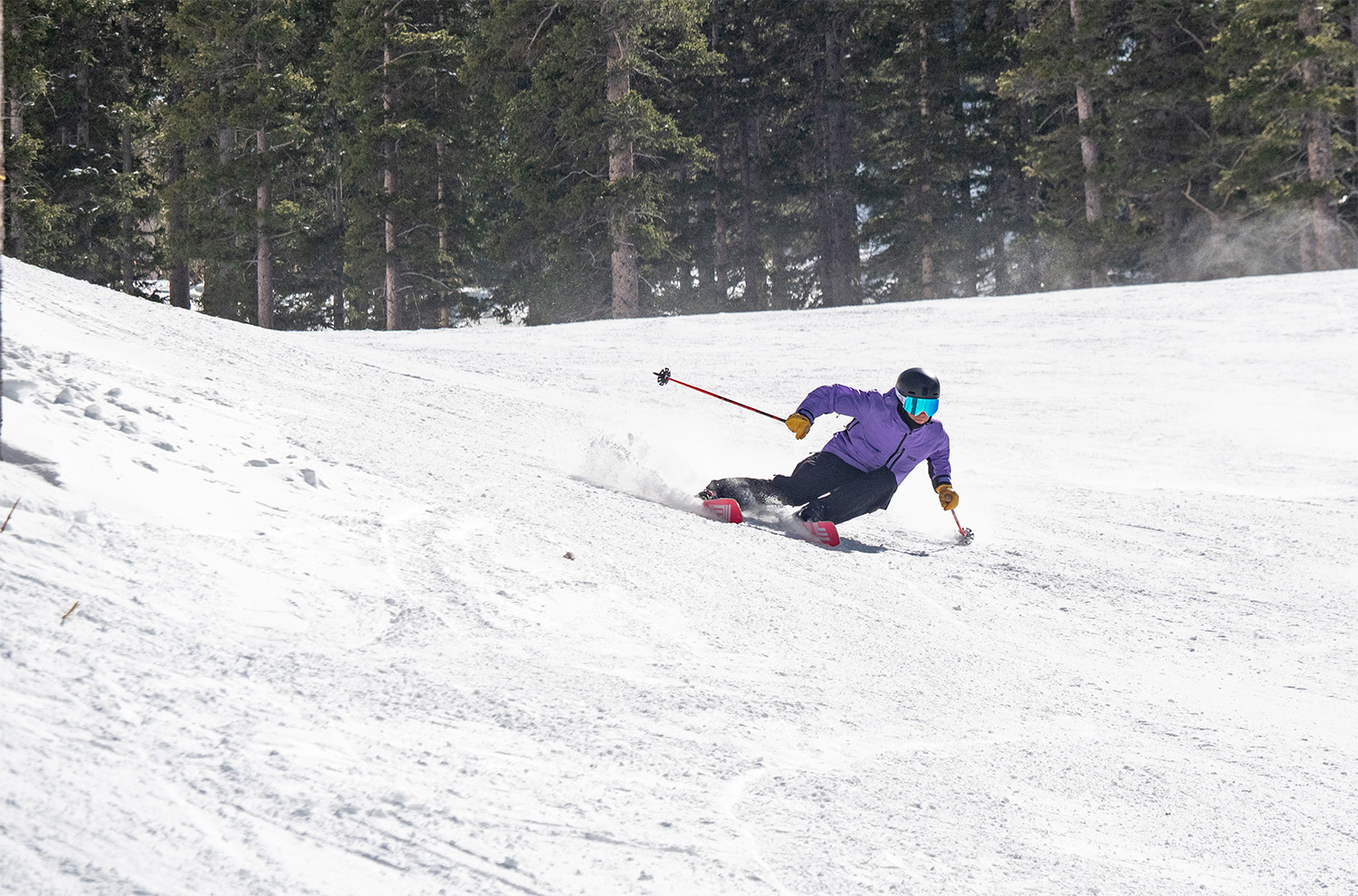
Deep Dive: ZAG Mata
We compare the ZAG Mata to the Line Blade, Black Crows Mirus Cor, Folsom Spar Turbo, Black Crows Octo, ZAG Harfang 96, Fischer The Curv GT 85, ZAG Slap 98, Nordica Steadfast 85 DC, Elan Wingman 86 CTi, Dynastar M-Cross 88, K2 Mindbender 90C, Salomon Stance 90, Wagner Summit 91, & 4FRNT MSP 91.
Blister’s Flash Reviews and Deep Dives are accessible to those who purchase one of our paid subscriptions
To get our comprehensive Deep Dives and our initial, unfiltered reports on new gear, become a member and receive many other services, deals, and discounts.
If you’re already an active member, please log in.
(If you’re already logged in and a member in good standing and seeing this message in error, please refresh this page in your browser.)
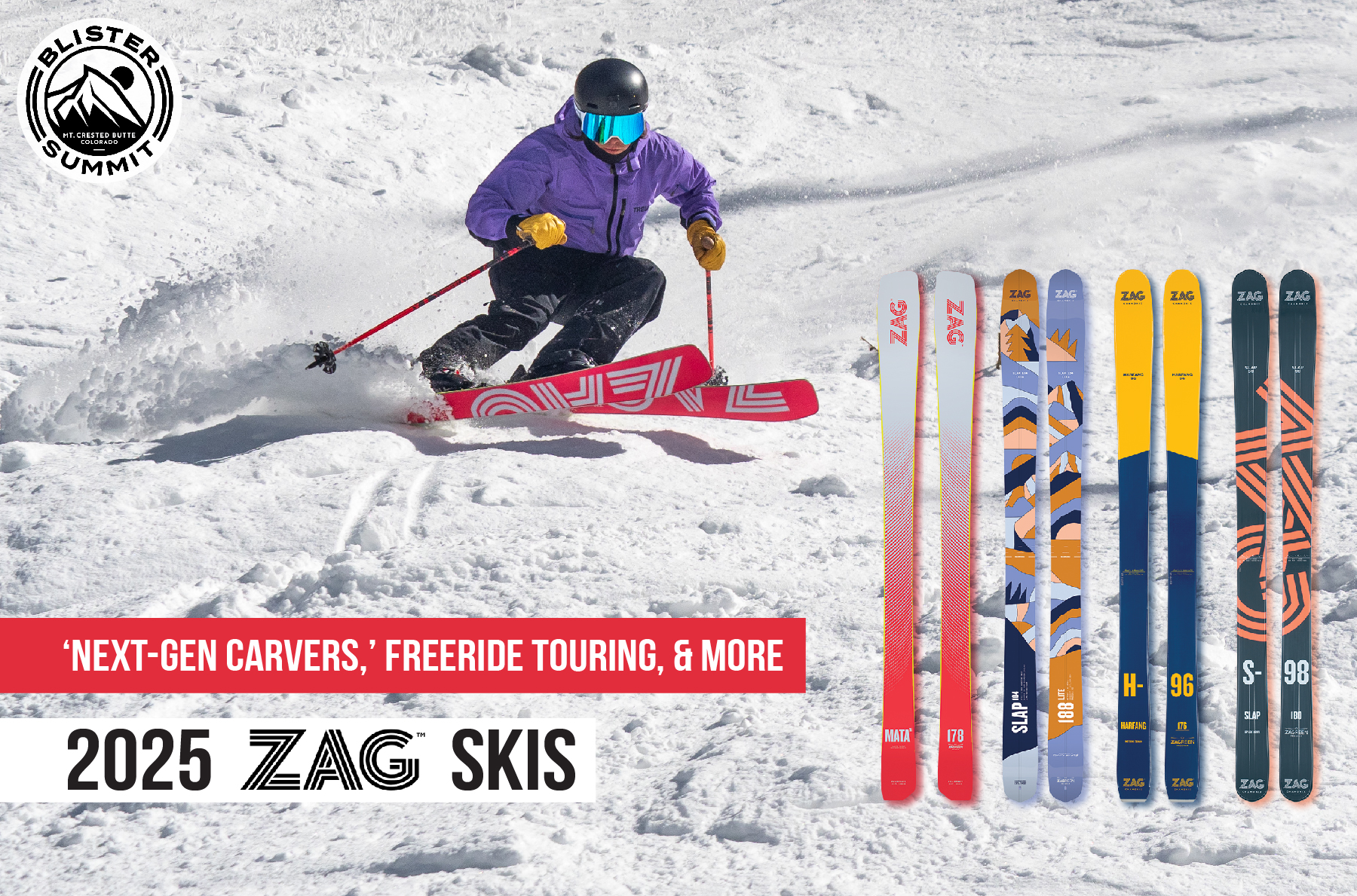
ZAG’s ‘Next-Gen Carver’ + 2025 Ski Lineup | Blister Summit Video
Across its 20-year history in the freeride, touring, and all-mountain worlds, Chamonix-based ZAG has continued to refine their lineup, whether through design or efforts to reduce their environmental footprint. In this video, we get the details on that history — plus the brand’s 2025 ski lineup — from ZAG’s Théo Voinchet and ZAG athlete, Teton Brown.

2024-2025 Blister Digital Winter Buyer’s Guide
350+ skis, 65 boots, and 280+ pages of honest, accurate product reviews and comparisons. Order our 24/25 Winter Buyer’s Guide or become a BLISTER+ member to read the Digital Guide NOW.
If you’re already a Blister Member or have purchased the 24/25 Winter Buyer’s Guide and are seeing this message, please log in and then refresh this page.
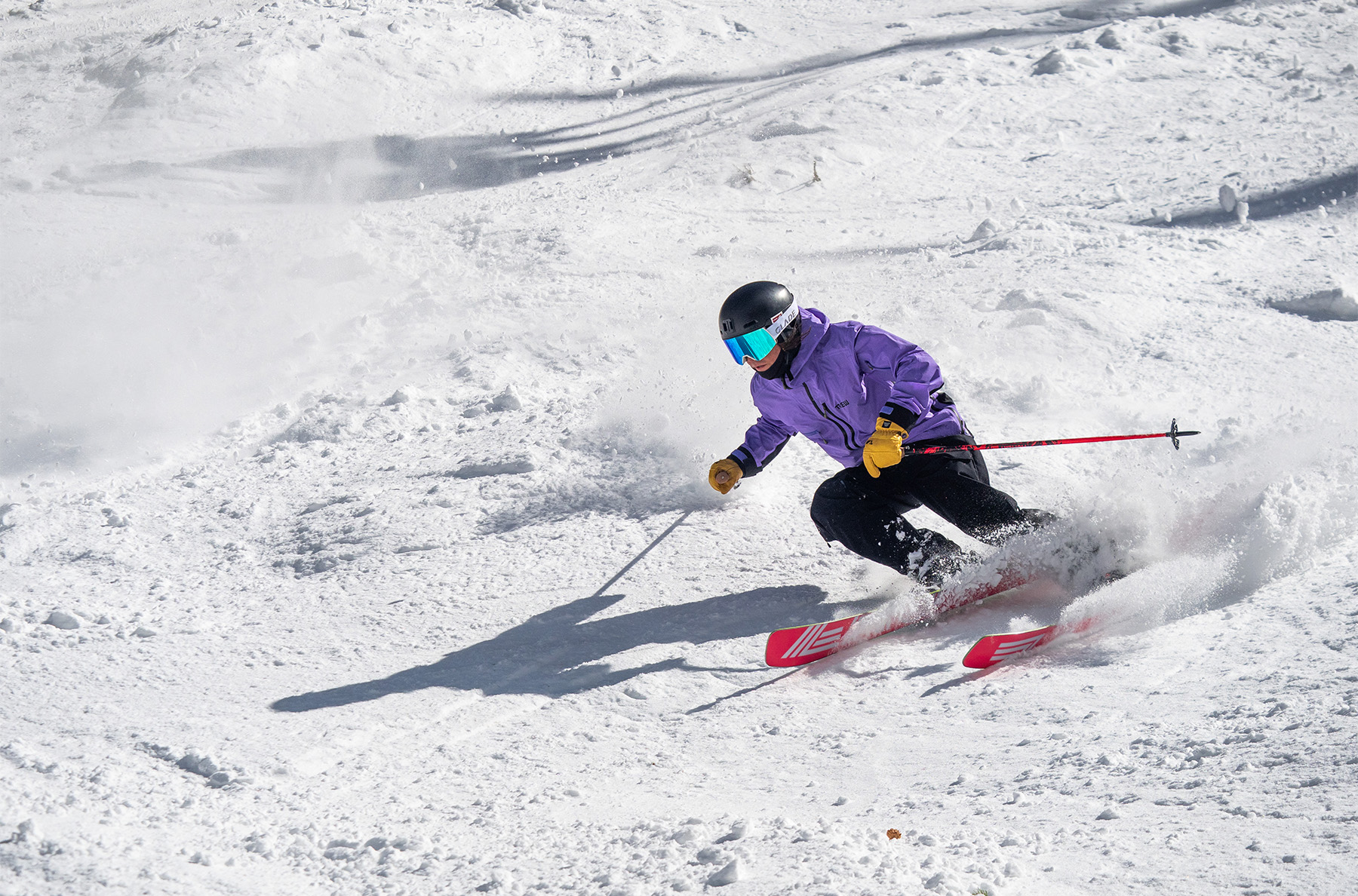
Flash Review: 24/25 ZAG Mata Ti
The new 90mm-wide Mata Ti isn’t a typical all-mountain ski, and as a result, it can be atypically fun in certain scenarios. Here are our initial thoughts on this tight-radius ski.
Blister’s Flash Reviews and Deep Dives are accessible to those who purchase one of our paid subscriptions
To get our comprehensive Deep Dives and our initial, unfiltered reports on new gear, become a member and receive many other services, deals, and discounts.
If you’re already an active member, please log in.
(If you’re already logged in and a member in good standing and seeing this message in error, please refresh this page in your browser.)



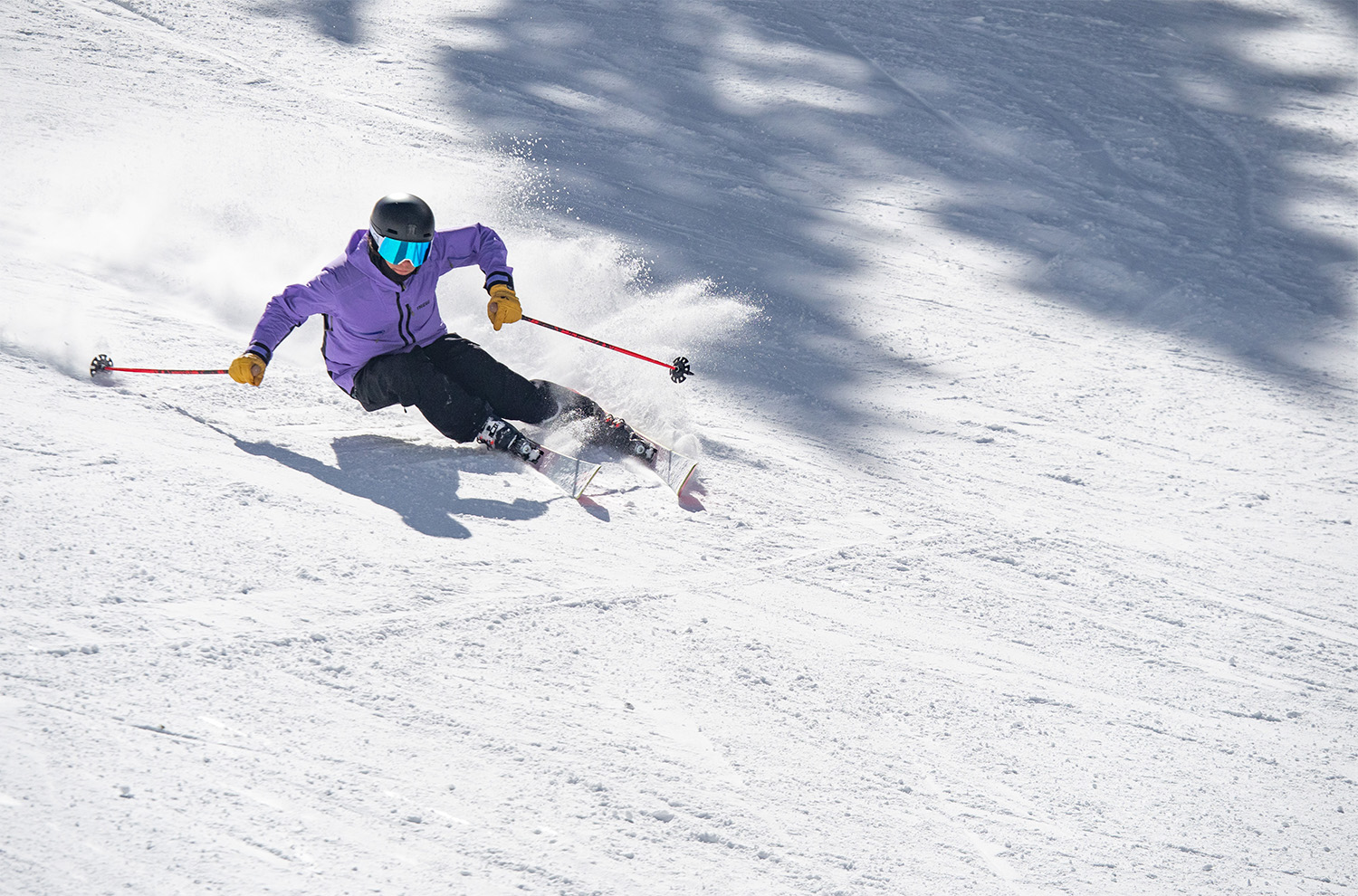
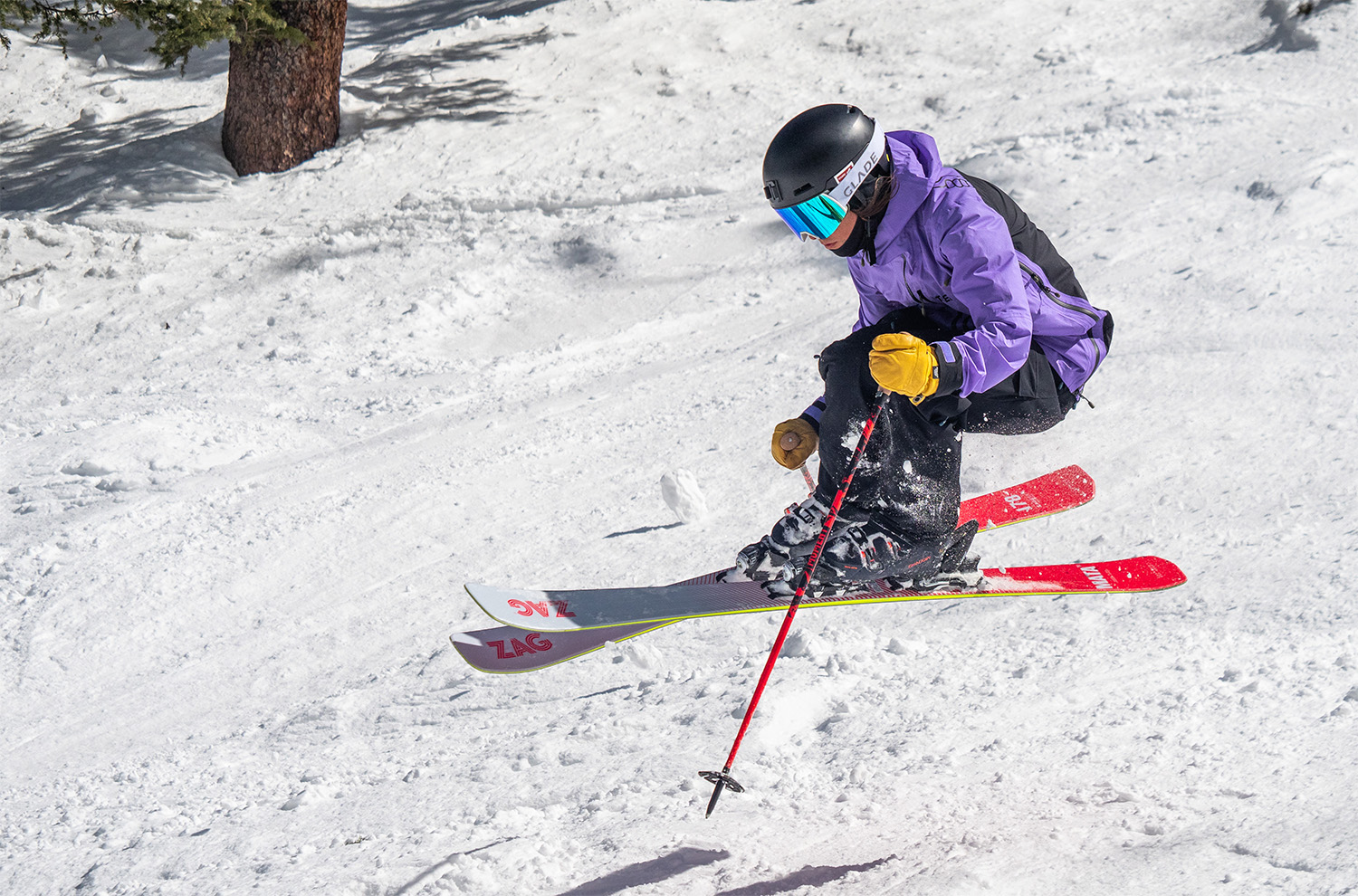
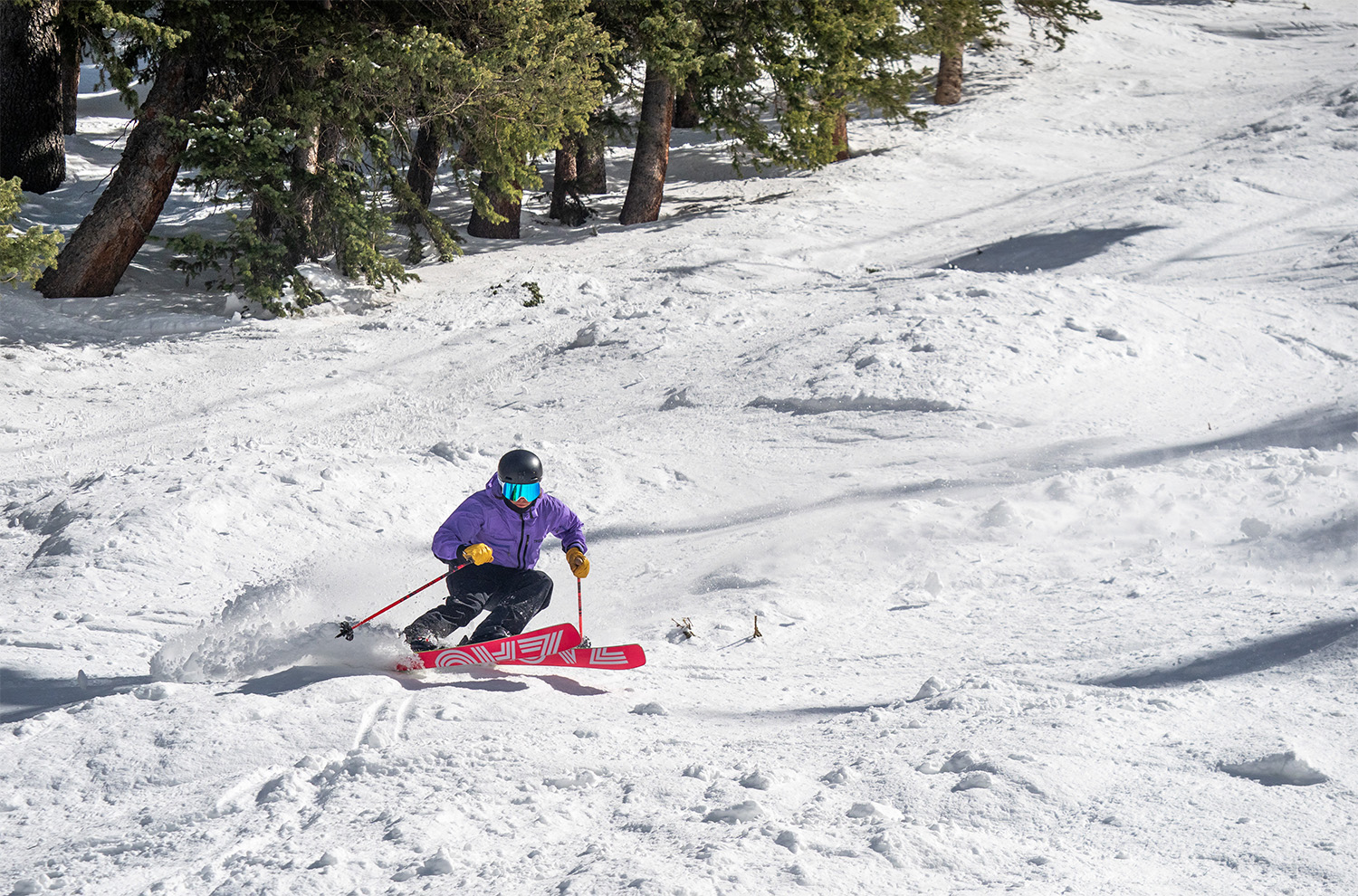

I was really excited about this ski, it sounds very fun… so of course there’s no 180+ length. FML
My suspicion is that, like the Rossignol Forza or Line Blade, it may be a ski you want to size down on, but I’m looking forward to testing that hypothesis and discussing in an upcoming Flash Review.
Shorter than I’d go for vs a dedicated frontside ski? E-Titan in the 177 was too short for me, S/Force 11 in the 184 felt great. The Arcade 88 is looking like a decent alternative at least
Yeah, sizing down not because it’s a very stable ski, but because it’s a ski that’s designed to maximize fun at more moderate speeds, so you wouldn’t gain much stability by sizing up but you might make the most of its lower-speed fun with a shorter length. E.g., I prefer the 173 cm Rossignol Forza 70 because I don’t feel like I get much more stability or versatility from the 181, but that longer length doesn’t feel as engaging and exciting when making the tight turns it’s designed for.
All that said, I’ve now got a few laps on this ski, and it doesn’t feel quite as niche as options like the Forza, Blade, and Black Crows Mirus Cor, so I’m not sure it’d make sense as a carving-oriented all-mountain ski in your case, given the length options. So far, it seems kind of like a more directional, not-as-tight-turning Blade. I.e., not as exhilarating on piste, but potentially a bit more versatile — however, I still need much more time on it to really wrap my head around it.
Am going to a test weekend in Engelberg in a few weeks and Zag will be there, really hope they have this ski, looks like it will be a hoot
I spent an East coast groomer day on this ski and loved it!!!
Intuitive, responsive, smooth, stable, true to size!!!
I was on the 173cm and I normally ski a fully cambered ski at 170. Can’t wait for the ski to be available, It really matched my personality as a skier!!!
My current quiver consists of a Rally, Mirus Cor, Blade, bent 100 & QST 106.
I wouldn’t say the Zag Mata Ti is even close to the Blade or Mirus Cor!!! This thing has a much different feel than either of those skis even skiing it on the “wrong” feet or backwards was still enjoyable!!
Hey, how would you say they compare to the blades and mirus cor for carving? thanks!
Really interested in these, do you known when the full review will be published?
Just took these skis out today here in Whistler. Amazingly fun and shreddy ski for firm & variable conditions. A bit stiff and punishing if you jump off something though.